The Wonderful 101 Review
Platinum Games have a habit of surprising us. They never produce two titles in a row that follow any kind of pattern, having put out some excellent games like Bayonetta and Wii-exclusive MadWorld, and not-so-excellent games, like Anarchy Reigns and Metal Gear Rising: Revengeance. No matter which way you look at it, they’re not boring, and so when they announced Project P-100 during the Wii U’s pre-release hype, we didn’t know what to expect other than something unique and, quite possibly, special.
Since renamed The Wonderful 101, Project P-100 turned out to be an isometric, puzzle/action-adventure/brawler hybrid (like a combination of Pikmin and Viewtiful Joe) that looked beautiful, weird and fun in equal measure. Originally mentioned as a Wii U launch title, The Wonderful 101 was delayed by more than half a year, before re-surfacing with a bang at this year’s E3 conference in LA. Now, a few months later, it’s finally here – and it’s every bit as beautiful, weird and fun as it looked when it was first announced. So, first things first: just who the hell are The Wonderful 101?
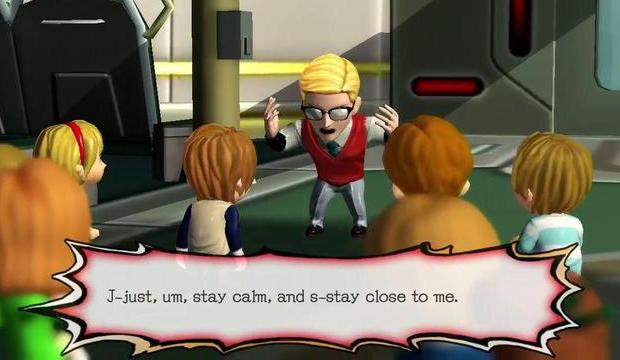
To the citizens of Blossom City, Will Wedgewood is a mild-mannered schoolteacher who’d be the last person to rely on in a crisis. However, beneath the tweed and knitwear beats the heart of a hero, for when the Earth is threatened by extra-terrestrial forces, he becomes Wonder-Red, the courageous leader of the UN’s special emergency task force, The Wonderful 100 (that’s pronounced “one-double-oh”, folks).
A team comprised of 100 individuals from around the globe, they are Earth’s greatest defence, able to use their Centinel Suits (“cent”, like a hundred, see?) to unite together and create devastating weapons to protect humanity. Though it’s unexplained, you are number 101, the faceless, formless, nameless, unacknowledged controller of the team.
With the Earth under attack from the Geathjerk, an alien armada that has already tried to invade our planet twice, the Centinals are called into action to fight the Third Earth Defence War. Throughout the course of the story, Wonder-Red is joined by six other leaders, designated by colours, but the other 93 members have to be found and recruited by you through exploration.

As you battle the Geathjerk forces, you’ll face a huge variety of enemies from little round robots to towering, bio-organic Kaiju-style monstrosities. Everything is tinged with a self-referential sense of humour, whether you’re facing the Geathjerk’s hammy, over-confident generals, dealing with a one-eyed space pirate prince who has his own Centinel team or listening to the very individual members of your own group bicker amongst themselves.
Their personalities are deliberately over-the-top, from Red’s habit of addressing everyone by their full title to Blue’s Paul Walker-flavoured dude-broing and Pink’s red-eyed rages. The writing is sharper than you’d expect, and the story longer, deeper and more engaging than it perhaps has a right to be. The comedic barbs spat left and right between the Centinels may play on race and gender to a degree that some would consider old-fashioned, but the gags come so thick and fast that you won’t be able to stop yourself from smiling at least now and then. The influx of in-jokes and pop references is constant and often chuckleworthy, even if you don’t much care for the team’s incessant sniping.
Presented from an isometric viewpoint, The Wonderful 101 sees you navigate the team around various environments with the left stick. You’ll only have direct control over the designated leader, and the others will follow like the tail of a comet, only coming into play when you activate their Unite Morphs. Non-combat Morphs include building bridges and ladders by linking together across gaps or up the side of buildings, or forming a hang-glider to take to the skies, while combat Morphs come in seven flavours (Hand, Sword, Gun, Whip, Hammer, Claws and Bomb).
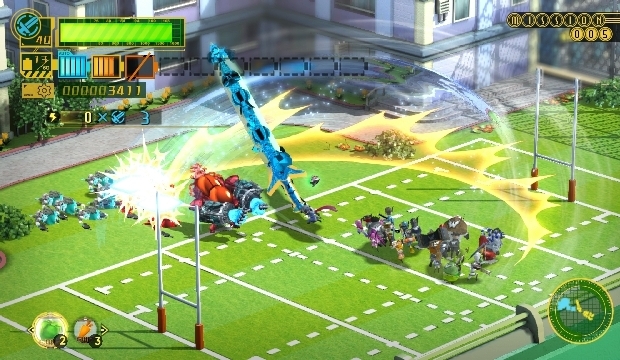
You activate them either by drawing corresponding symbols with the right stick or directly onto the GamePad screen with your finger or a stylus. The power is proportionate to the number of Wonderful Ones in a given Morph, so the longer straight line you draw, the bigger Unite Sword Blue will create. If you need to , you can bolster your team beyond the official Centinels it contains by temporarily recruiting civilians (by drawing a circle around them). It would be very simple, if only the pattern recognition were more competent.
In true Platinum Games style, The Wonderful 101’s action is infuriatingly hit and miss. The variety of attacks and Unite Morphs is dizzying, especially later, when you’re creating giant balls, rocket ships and big, spiky shields, or transforming into an over-sized slinky to evade attacks, but switching between Morphs during battle isn’t always easy. The Whip, Hammer and Bomb symbols are so similar that the game often has a hard time of reading your intentions, leading to mistakes and frustration. It’s often simpler to stick to one Morph, unless a change is essential, and use single-Morph combos to succeed.
Beyond combat, the different Morphs have other uses, often to help with puzzles. For example, the Hand can turn cogs to open containers, the Claws can prise open hatches and climb certain walls, and the bomb can slow traps. Quite often there are secret routes hidden in levels that protect valuable pick-ups, and using the correct Morph for a particular environmental feature is essential to finding them all.
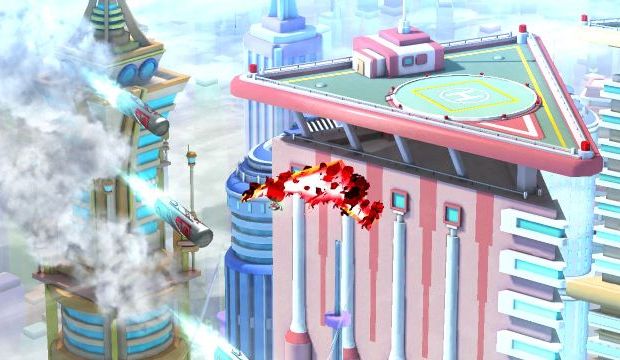
Most Operations end with a boss fight as the team attempt to stop the Geathjerk from disabling the Earth’s Gaia Planetary Defence System. These are multi-stage battles encompassing all manner of gameplay tropes such as on-rails shooting, first-person melee combat and good old-fashioned memory-based boss fighting. Every one of them is a highlight, bookended by incredible action set-pieces interspersed with quick-time button prompts and Unite Morph commands.
The Wonderful 101 can seem unfairly hard from time to time (the difficulty settings of Very Easy, Easy and Normal should be taken as Easy, Normal and Hard for most players), often not due to the combat but to the occasional environmental events that will kill you once or twice before you even realise what it is you’re expected to do. You’ll be guided through areas by P-Star (a nod to Platinum Games’ own logo), a little robot who sounds like R2D2 and will highlight areas of interest, but even with his help the way forward isn’t always explicit.
Navigation is never more of a chore than in the rare moments that you take the team indoors, and action switches to the GamePad. In these sequences you can only control the camera with the gyroscope, and you’re so tightly packed in that it becomes actually horrendous to play. In one level you’re inside a cube with coloured gems on the walls. Hitting the right gem (using the image on the TV screen as a guide) makes the cube roll in that direction, but it’s so hard to move the team around in such a short space when you can’t control the camera that the whole sequence is just irritating.
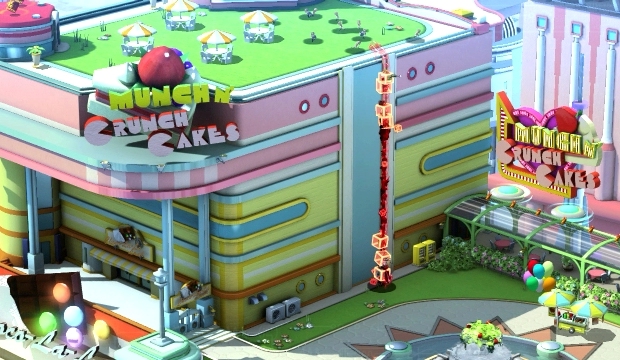
To alleviate this, there isn’t a great penalty for failure. You’ll be ranked after each Operation based on time taken, number of deaths, how many medals you earned in each segment (called “missions”), how many civilians you saved and how many collectibles you found. The consequences of repeated failure rarely amount to much more than a reduced reward of O-Parts, the currency used to buy upgrades and moves between Operations.
Collectibles come in several types, from figurines and platinum coins to space fruit (that you can combine later to create new items), regenerative cakes and stews or batteries to recharge your Unite meter. In short, there’s always something worth exploring for. You’ll also level up your characters as you play, which increases their damage and your overall health bar.
Aside input issues, there’s also an element of repetition that can pervade some levels, wherein you’re repeatedly trapped by invisible barriers until you’ve beaten all the spawning enemies. It’s not a major problem, as there are so many different conditions flavouring the encounters, but some may find it tiresome nonetheless.
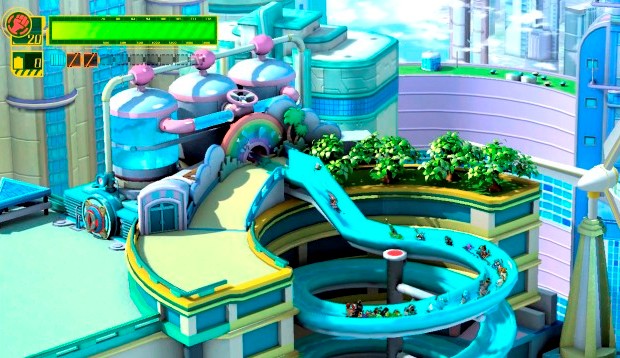
If you fancy a change, you can engage in 5-player local multiplayer with one person on the Pad, and everyone else on wiimotes. The Wonderful Missions come in low variety and act like free-play missions with clear objectives for success. While 101 is fun with others, the formula works better when you’re against the enemy, rather than frantically filling the screen with four other players. It’s not a question of playability, but visibility, as it just gets so busy on-screen.
The Wonderful 101 is a beautiful looking game, bright and colourful in a way that only Nintendo games are able to pull off, and absolutely brimming with style and character. The cartoon aesthetic evokes memories of Viewtiful Joe or any of a dozen Saturday morning shows you watched when you were a nipper. It’s always clear that Hideki Kamiya and Atsushi Inaba had a hand in its creation, and it rarely puts a foot wrong in terms of visuals. The attention to detail in the characters is great, as each Centinel Suit is different in far more than just colour. The main seven are diverse enough, but when you start unlocking the other 93 you’ll see some incredibly off-the-wall character design at work in field agents like Wonder-Cellphone and Wonder-Knight. Each Wonderful One is assigned a colour corresponding to one of the leaders, although the difference when controlling them is purely aesthetic.
Enemies and environments are highly detailed and wonderfully diverse, as you visit cities, jungles, lava-filled temples and icy caverns. Every game area is beautifully-realised and filled with things to say and hazards to navigate, even though switching down to the GamePad screen (by pressing Minus) can render everything just a little too small for comfort. While the voice acting isn’t award-winning, lines are delivered with competence, and every character has a unique sound and personality.
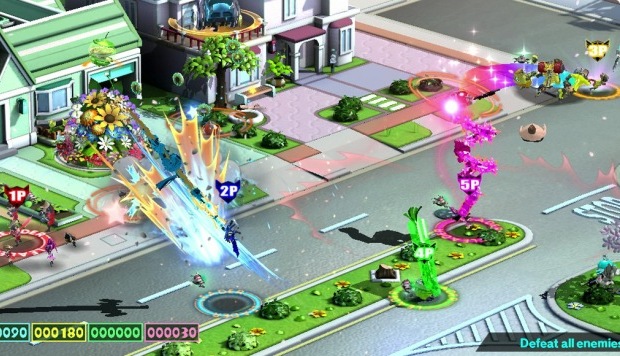
VERDICT: The wonderful 101 is a big game, and not just by Platinum’s standards. The 12 to 15 hour campaign is padded out with a ton of collectibles and hidden pick-ups, an assortment of multiplayer-enabled side missions and a huge amount of replayability. It’s not always user-friendly, but it is incredibly unique and often very funny, which makes its difficulty all the more incongruous. The biggest problem is that it just doesn’t feel tight enough, and the input system is far too haphazard for precision. And yet, it’s hugely likeable and playable throughout.
As an exclusive, The Wonderful 101 is a real triumph for Nintendo, joining ZombiU and Pikmin 3 in showcasing just how cool a peripheral the GamePad truly is when used right. It might not always work as it should, but when it does it’s something quite extraordinary. The overall presentation is of such high quality, and there’s just so much heart in it, that The Wonderful 101 is an absolute must-buy for Wii U owners.

VERY GOOD. An 8/10 is only awarded to a game we consider truly worthy of your hard-earned cash. This game is only held back by a smattering of minor or middling issues and comes highly recommended.




